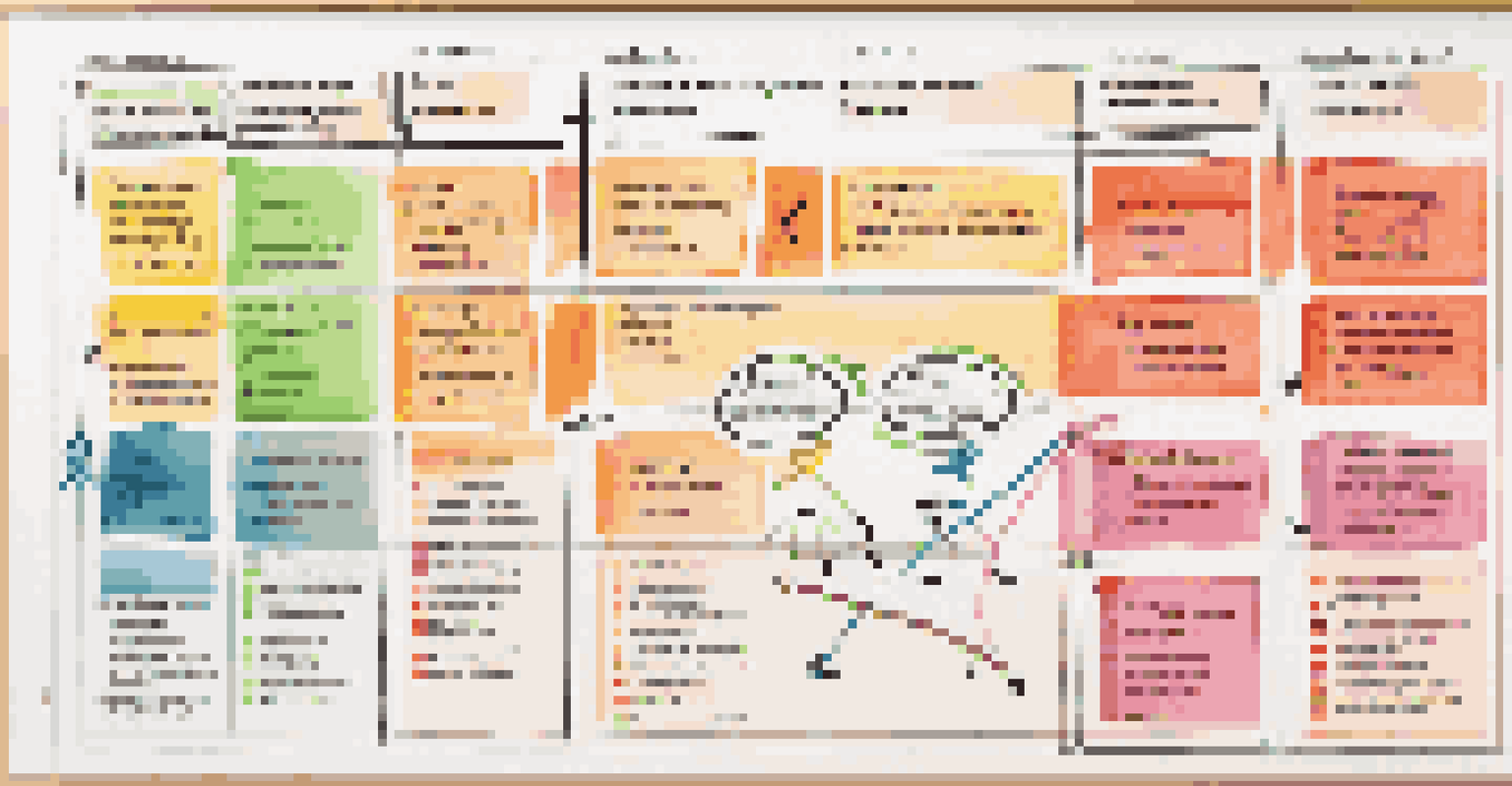Visual Representation of Career Goals: Best Practices

Understanding the Importance of Career Goals Visualization
Visualizing career goals is more than just dreaming; it's about creating a roadmap for your future. When you see your goals laid out visually, they become tangible and achievable. This practice allows you to clarify your aspirations and motivates you to take action toward them.
Setting goals is the first step in turning the invisible into the visible.
Think of it like a map for a road trip. Without it, you might find yourself taking wrong turns or getting lost. A visual representation keeps your destination in sight and helps you navigate your journey, making the process less overwhelming.
Whether through vision boards, charts, or infographics, the key is to create something that resonates with you personally. This visual cue can serve as a daily reminder of what you’re working towards and why it matters.
Choosing the Right Tools for Visualization
There are countless tools available to help you visually map your career goals. From digital platforms like Canva and Trello to good old-fashioned pen and paper, the options are vast. Choosing the right tool depends on your personal preference and how you best process information.

For instance, if you thrive on color and creativity, a vision board filled with images and quotes might inspire you the most. Conversely, if you prefer structure, a flowchart or a mind map could help you logically lay out your career path.
Visualize Your Career Goals
Creating visual representations of your career aspirations makes them more tangible and motivates you to take actionable steps.
Experiment with different formats until you find one that feels right. The goal is to create a visual representation that not only looks appealing but also motivates you to stay focused on your aspirations.
Incorporating SMART Goals into Your Visualization
When visualizing your career goals, incorporating the SMART criteria can enhance clarity and focus. SMART stands for Specific, Measurable, Achievable, Relevant, and Time-bound. By applying this framework, you ensure that your goals are not just vague ideas but actionable objectives.
A goal without a plan is just a wish.
For example, instead of saying, 'I want to be successful,' you might visualize a goal like, 'I will become a project manager at my company within two years by completing relevant certifications.' This specificity makes your career aspirations more tangible.
Integrating SMART goals into your visual representation helps you track progress and adjust your strategies as needed. This way, your career path becomes a dynamic journey rather than a static endpoint.
Utilizing Color Psychology in Your Visuals
Color psychology plays a significant role in how we perceive and feel about our goals. Different colors evoke different emotions, which can either inspire or hinder your motivation. For example, blue often represents trust and calmness, while yellow signifies optimism and energy.
By consciously choosing colors that resonate with the emotions you want to feel regarding your career goals, you can create a more effective visual representation. Imagine a vision board where the colors uplift and motivate you each time you glance at it.
Utilize SMART Goals Framework
Incorporating the SMART criteria into your visual goals ensures they are specific, measurable, achievable, relevant, and time-bound.
As you design your visuals, consider the emotional response you want to evoke. This thoughtful approach can make your career goals feel more aligned with your personal values and aspirations.
Incorporating Milestones for Progress Tracking
Visual representation isn't just about the end goal; it’s also about the journey. Incorporating milestones in your visuals allows you to track progress and celebrate small wins along the way. These milestones act as checkpoints, reminding you how far you’ve come.
For instance, if your goal is to transition into a new career, outline the steps you need to take, such as completing a course or networking. Marking these milestones visually can help break down the larger goal into manageable pieces.
Celebrating these small achievements not only boosts motivation but also provides a sense of accomplishment. It reinforces your commitment to your career path and encourages you to keep moving forward.
Sharing Your Visuals with Others for Accountability
Sharing your visual career goals with colleagues, friends, or mentors can create a sense of accountability. When you vocalize your aspirations and show your visuals, you invite others to support you on your journey. This community aspect can be incredibly motivating.
Think of it as a team effort; having someone else aware of your goals can encourage you to stay committed. They can check in, provide feedback, or even share their experiences, enriching your own journey.
Celebrate Milestones in Progress
Incorporating milestones in your visuals helps you track progress and celebrate small wins, reinforcing your commitment to your career path.
Moreover, discussing your goals can lead to new opportunities and connections, broadening your professional network. So don’t hesitate to share your visual representations; you might inspire others in the process!
Revisiting and Updating Your Visual Representations
As you progress in your career, your goals may evolve. It's essential to revisit and update your visual representations regularly. This practice ensures that your visuals remain relevant and reflect your current aspirations.
Consider setting aside time every few months to review your goals. Ask yourself if they still resonate with you or if they need adjustment based on new experiences or insights. This reflective approach keeps your career path dynamic and aligned with your personal growth.

By maintaining an updated visual representation, you can continue to motivate yourself and stay focused on the journey ahead, regardless of how your career aspirations may shift.